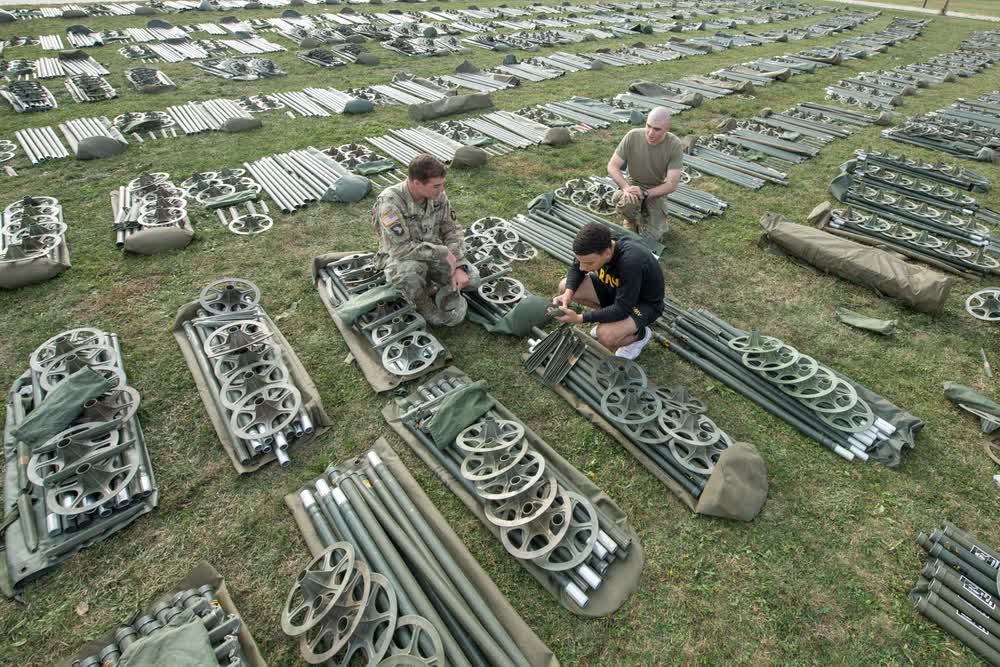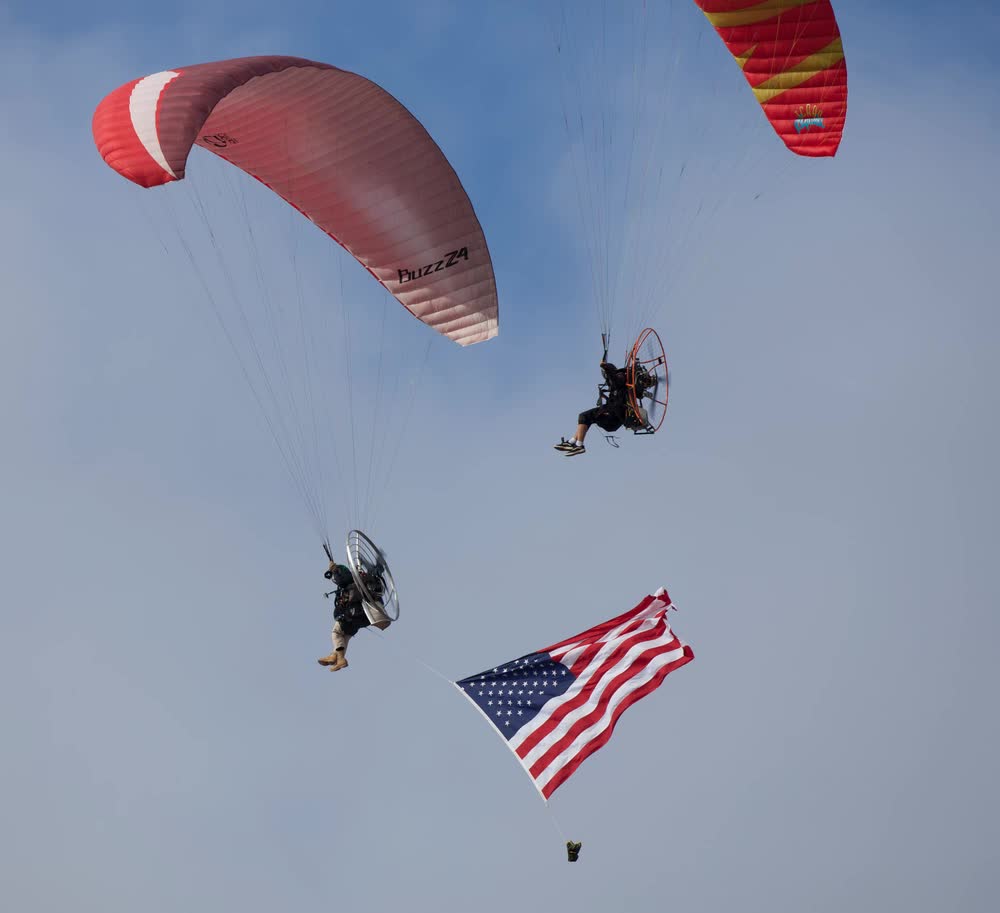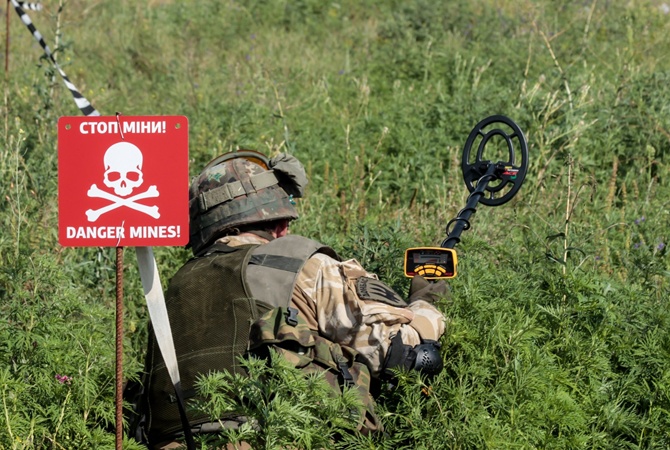This article by Todd South was originally published by the Army Times.
The days of stuffing Conex boxes full of any and all gear on hand and shipping them to a combat zone are over.
The Army wants sleeker formations. The service is modernizing everything from night vision and rifles to tanks and artillery. There’s no more room in the supply section for unused gear that’s piled up over the recent wars.
And that gear is more than an eyesore: it’s a time suck.
As the service prepares for the possibility of a conventional war, the one thing soldiers can’t spare is time.
Every set of outdated optics, old M4s or obsolete radios add up to days each month that soldiers have to drag out, inventory, and maintain gear they don’t use. And those days rob soldiers of training time on basic skills and new equipment needed to fight the next war.
It appears that top Army leaders feel their pain. A recent pilot program now making its way across the force aims to clear out the junk cluttering a unit’s space and free up time for soldiering.
Commanders a generation ago might have kept a “property book” with five to 10 pages of equipment. Today, their counterparts at operational units such as the 82nd Airborne Division, 3rd Infantry Division and 2nd Cavalry Regiment now tote books with 50, 70, or more than 100 pages.
“A company commander in the 82nd Airborne can carry a property book of 50 pages or more,” Capt. Stephen Glynn, headquarters company, 1st Battalion, 505th Parachute Infantry Regiment, 3rd Brigade Combat Team, 82nd Airborne Division told Army Times. “That book alone accounts for 3,200 pieces of equipment that he or she must inventory, clean, and maintain throughout the year.”
That could mean more than 200 rifles and optics, 45 handguns, 35 vehicles and thousands of other pieces of gear, ranging from communications equipment to chemical protection kits and other mission essential tools and supplies for a single company.
But not all of that is essential any longer.
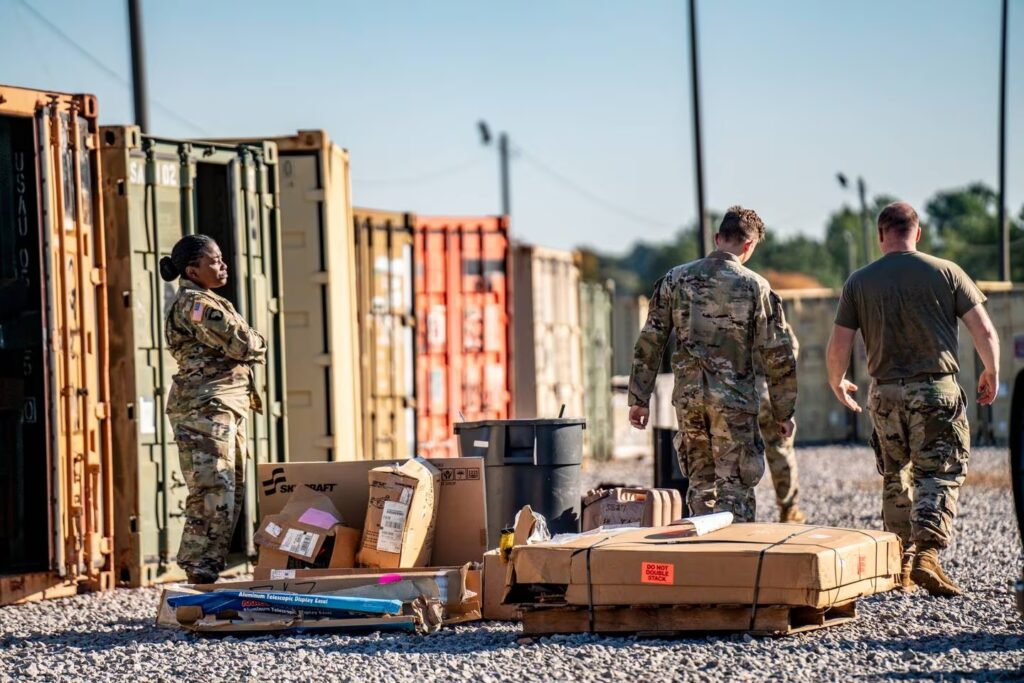
Much of the growing property list for these combat units are holdovers from decades of Global War on Terrorism deployments, commanders said. And a complicated process for ditching unnecessary or unserviceable equipment has, for years, stymied unit leaders’ efforts to trim their books.
When Army Chief of Staff Gen. Randy George took office in September, he laid out clear priorities – warfighting, continuous transformation, strengthening the profession and delivering ready combat formations.
George has commanded at all levels, from tactical to strategic. He’s had his soldiers roll out warehouses full of gear, unpackage it, handle inventory and account for thousands of items.
“Laying out, counting it, you only have to do it once or twice to know how painful it is,” George told Army Times.
At the time he took over, he also announced a pilot program, later called Rapid Removal of Excess, from which he expected quick results.
The chief’s directive was far-reaching. He told his staff to identify two divisions, one light and one heavy, in the same corps. Larger Army formations such as Army Materiel Command, Forces Command and Army headquarters would support those divisions over a 90-day period while they cut excess from their inventory.
The move – clearing out old gear – may seem administrative, but there’s a bigger plan at play, George said.
“I think it’s going to improve our readiness,” he said. “Obviously if you’re out on today’s battlefield you need to be able to move, you need to be able to conceal yourself, you’re dragging all of this stuff around. If you’re significantly leaner, you’re significantly less targetable.”
By cutting down on how much time and energy officers, and by extension, rank-and-file soldiers, spend sorting through warehouses full of gear nobody uses, they’ll be freed up to focus on the many other demands already on their plates.
Related: Back-saving exosuits may someday be standard-issue gear for troops
Reducing the burden on soldiers
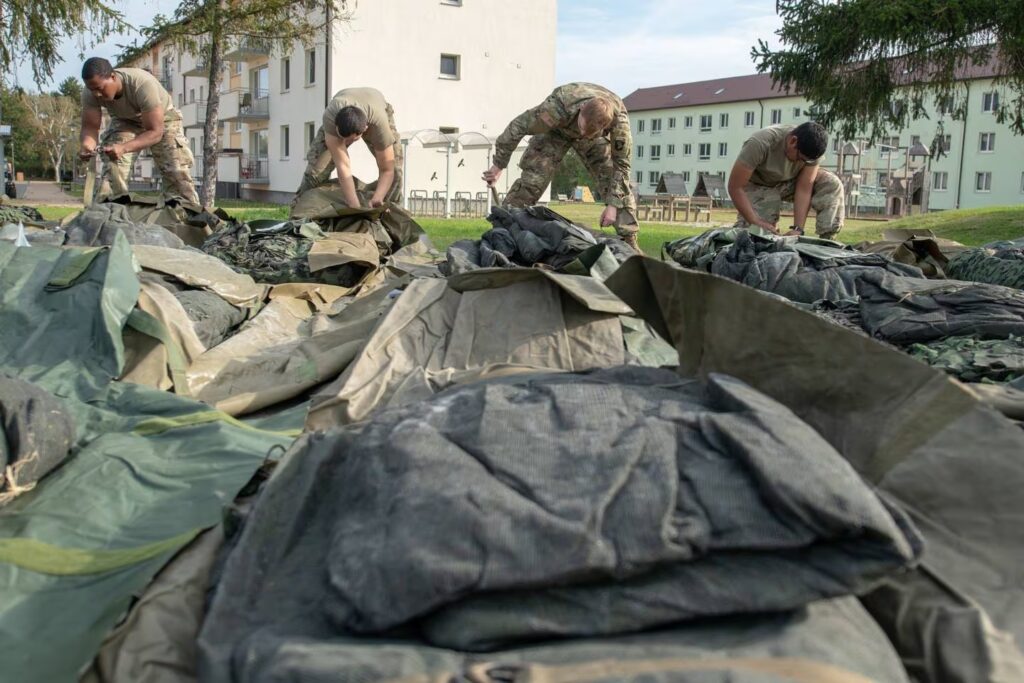
For generations, the Army has dictated what equipment various kinds of units must keep in their inventory. At the same time, each unit may be tasked with a new mission or duty that then adds more to that load.
Typically, a unit commander inventories about 10% of their gear each month throughout the year.
Equipment that they had to track but didn’t use, sometimes for years, could stack up. The sheer volume of gear created storage problems, and spilled over into areas originally meant for training. It also meant time spent maintaining that gear, which had to be kept intact, clean and in working order, just in case.
For a long time, getting rid of anything was an uphill battle.
Maj. Brian Campbell, executive officer of 3rd Brigade, 82nd Airborne, told Army Times that getting permission to remove the equipment required approval all the way up the unit chain of command, from company to division or even corps. Simply getting the green light could take months.
A major hurdle every commander faced was the requirement that equipment couldn’t be turned in until it was in operational condition. That meant spending time cleaning, fixing, and ordering any missing or broken parts, which ate up time, money and led to a backlog that stalled the process.
The equipment removal pilot reversed those requirements. Soldiers from Army Materiel Command, Forces Command and the 3rd Expeditionary Support Corps, the unit responsible for coordinating sustainment operations for XVIII Airborne Corps, the parent unit of 3rd Infantry Division and 82nd Airborne, the two divisions chosen for the program’s first iteration, set up mobile sites at Fort Liberty, North Carolina and Fort Stewart, Georgia.
They also waived the maintenance requirement so soldiers could bring in gear “as is.”
“So, drive it, tow it, drag it down, we will take it and they are immediately relieved of that excess equipment,” said Eric Cowan, a longtime logistician with Army Materiel Command.
The move quantifiably streamlined the process.
In one example, a typical Humvee turn in, which would include a detailed inspection, could take two to three hours on average. Through the pilot process it took about 15 minutes, said Col. David Alvarez, 3rd Expeditionary Support Corps assistant chief of staff for support operations.
And with 800 “rolling stock” items — Humvees, trailers, mobile generators — turned in by the two divisions, that time adds up.
Glynn had a Humvee that his unit had been trying to get rid of for five years, long before he took command. But the maintenance and permissions just never aligned. Three weeks into the pilot, the Humvee was gone.
Both the support corps commander, Brig. Gen. John Hinson, and 82nd Airborne Deputy Commanding Officer Col. Jason Williams told Army Times that the key to coordinating so many units to turn in so much equipment in about 35 working days involved treating it like an operation. Units even conducted rehearsals before the pilot kicked off, noting which units would bring their gear in when and how much they expected to offload.
In the past, Williams said, getting rid of gear was seen as something the executive officers, unit logistics sections and supply sergeants would take care of while everyone else was out training.
For this pilot, instead of dragging out the inventory continuously, soldiers at Fort Liberty and Fort Stewart spent several days clearing out old and unused gear in one fell swoop. Despite the arduous – and monotonous – task, this means that future gear checks will be shorter and more seamless.
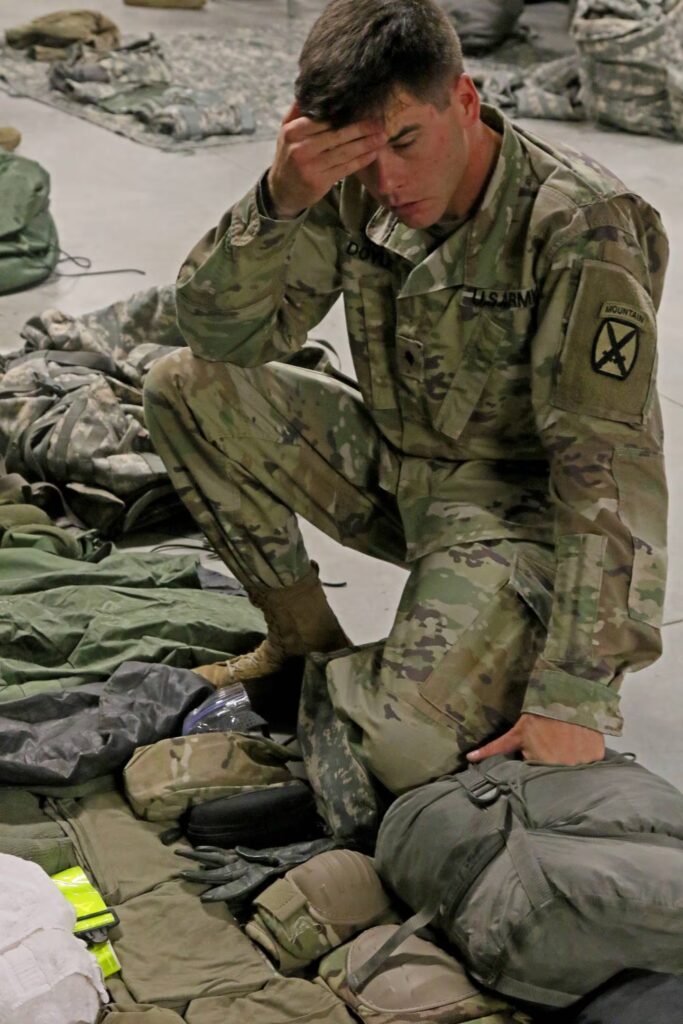
Those moves buy back time for all the other things soldiers have to do.
“First and foremost, we’re gonna train more,” Glynn said. “Now that I’m not wasting time every month, that time can be reinvested on training and maintaining mission essential equipment.”
Soldiers dragged out piles and rows of everything from generators, computer systems, automation equipment, tents, blue force trackers, satellites, drones, nuclear, biological, and chemical protection equipment, night vision goggles, sniper rifles, aged M4 carbines, small terrain utility vehicles, trailers, Humvees, light medium tactical vehicles, route clearance vehicles, and unserviceable tanks.
Many of the changes could be likened to clearing out a cluttered garage.
“If you haven’t done spring cleaning for years in your garage, it’s almost impossible to get anything done,” Campbell said. “It’s just so jam-packed with stuff you’re unable to use it.”
What the pilot program did, Campbell said, was give units a chance to clean out their space, organize it and figure out how to use what they had in their facilities to work better.
Before the pilot began, the 82nd Airborne Division was tasked with cutting 2,700 items. They got rid of 16,400.
Among those items, an estimated 3,000 pieces would have required maintenance to bring them up to the operational standard that units have had to meet before turning items over. Handing off that equipment “as is” saved more than 120,000-man hours of maintenance, Williams said.
That’s less time cleaning old weapons, scanning NBC gear for cracks, counting radio cables, and servicing vehicles that nobody drives anymore because they’ve been replaced.
That time saved has a ripple effect, Williams explained. Every item in the inventory has its share of scheduled and unscheduled maintenance. Scheduled items include oil changes for vehicles or function checks for weapons and other gear as they’re used for training or checked periodically.
Unscheduled maintenance often means that something broke.
Maintainers only have so much time, so when something breaks down, that takes priority, Williams said. That means that sometimes the scheduled maintenance gets pushed, creating backlogs. Enough broken equipment and those scheduled maintenance backlogs could bring down the readiness of both the equipment and the unit.
In February, the 101st Airborne Division at Fort Campbell, Kentucky, will begin the next equipment removal, Hinson said. Following that, I Corps, at Joint Base Lewis-McChord, Washington, then III Corps at Fort Cavazos, Texas are on the schedule.
George said there’s interest across the active Army and Guard. Units in Europe and the Pacific have asked to undergo the gear-shedding process.
Related: My 5 favorites pieces of issued gear
Other efforts to save soldiers’ time
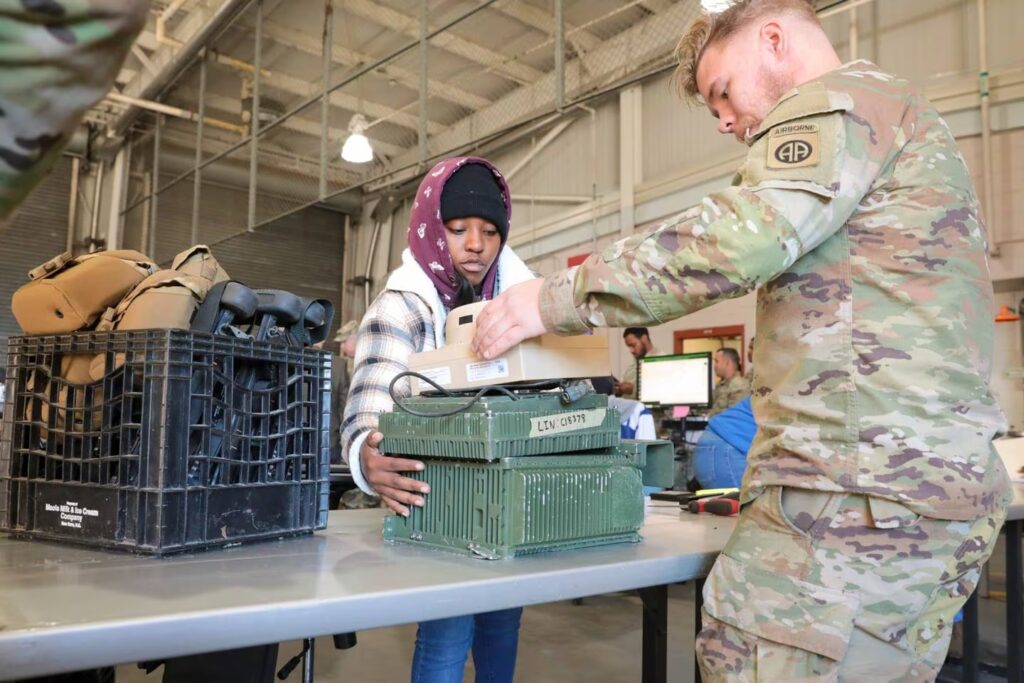
The pilot program is one of multiple efforts that George has highlighted in his first few months as chief, all aimed at moving both the physical and bureaucratic workload up the chain of command.
A simultaneous effort that hasn’t gotten as much publicity is the Modified Table of Organization and Equipment Reduction Pilot.
The table is the Army-assigned list of equipment and personnel a unit must have on hand, in good working order, to perform their primary mission. That can vary widely depending on the unit, but it is the linchpin for a unit’s capabilities.
The team reviewed 10,699 pieces of equipment on the various lists at the 3rd Infantry Division and 82nd Airborne and identified 159 pieces they recommended for removal. That’s in addition to the excess equipment not on the equipment table.
Some examples included computer and data systems, avionics testing equipment, a grader in the combat engineer company and secure telephones, Ashley Patoka, a Forces Command spokesperson, told Army Times.
George also noted early on in his tenure that he wanted to drastically reduce the footprint of units’ command posts. He sees a not-too-distant future where a commander uses no more than a tablet from the back of a vehicle to share an operating picture with their staff.
He also told Army Times that he met with senior chief warrant officers from across the force to examine how often mechanics were doing unnecessary vehicle maintenance simply because it was part of the regulation or schedule.
“If you could save 50 hours inside your formation and spend 25 of that on the range or doing some training, shoot, I don’t care if you use the other 25 to spend time with your family because we’re so busy,” George said.
How the Army’s inventory overhaul is going
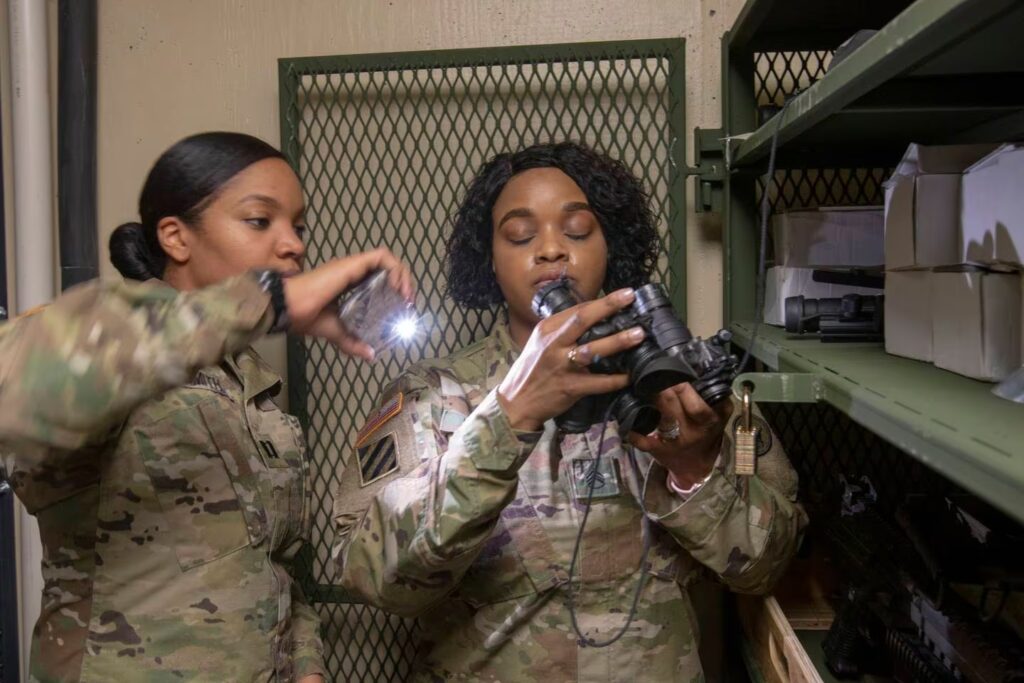
When the pilot began on Oct. 23, program overseers estimated they’d see 21,464 pieces of equipment leave the inventories of 3rd Infantry Division, 82nd Airborne and about a dozen other smaller units at both Fort Stewart and Fort Liberty.
By the pilot’s end on Dec. 15, the units had turned in more than 37,000 pieces of equipment. More than 16,000 pieces came out of Fort Liberty units and another 11,000 pieces from the Fort Stewart units.
An estimated 19,000 pieces were transferred to other units or depots for maintenance. The rest went to the Defense Logistics Agency for other dispositions such as foreign military sales, donations to veterans organizations – think of the tanks in front of the Veterans of Foreign Wars halls across the country – or to be sold for scrap.
But to drill down to the effects on soldiers tasked with tracking all this gear, Glynn, the headquarters company commander with 82nd, shaved 20 pages out of his property book. The captain estimates that simply tracking the excess equipment took at least two workdays a month.
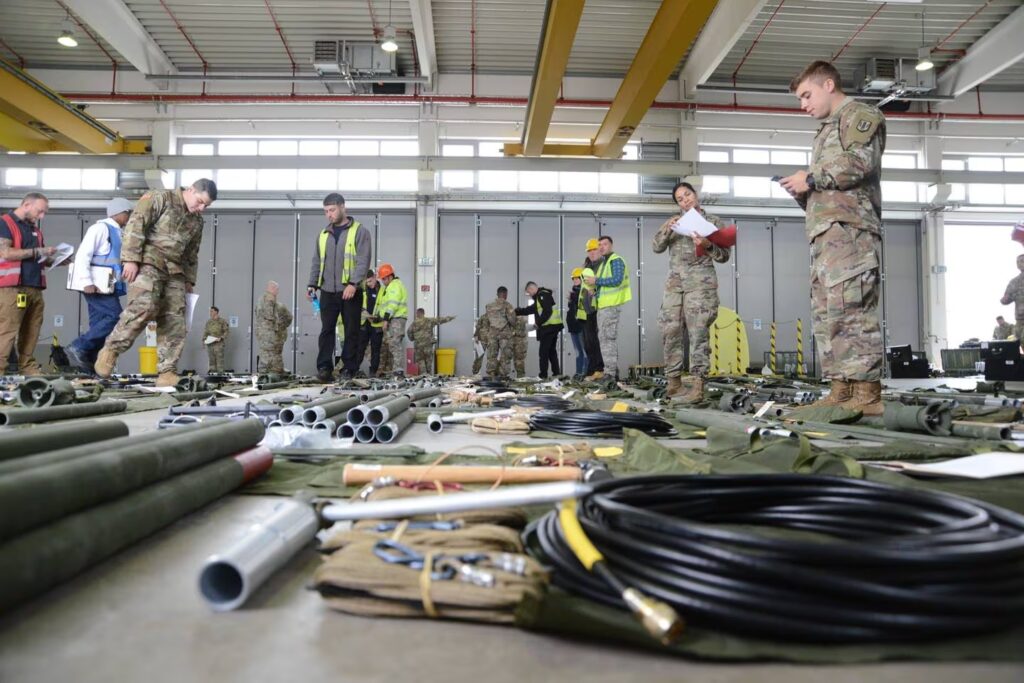
Chief Warrant Officer 3 Joshua Conde, property book officer for 1st Armored Brigade Combat Team, 3rd Infantry Division, shrank his property book by 10 pages, cutting 4,200 pieces of equipment out of a 28,000-item property book, or about 15% of what he had to track.
“I have never in my 25 years of active duty, seen this happen before,” said Williams, the 82nd Airborne’s deputy commanding officer.
When asked how long cutting so much gear from their lists would have taken under the old system where the burden was on the smaller unit and everything had to be in top maintenance condition, soldiers from the rank of general down to captain estimated between one and three years.
Beyond time, Glynn pointed to visible differences at his company headquarters.
Half of his storage space was filled with excess equipment.
He now has a Chemical, Biological, Radiological Nuclear training cage with 600 suits and training aids ready to use.
“I have a workshop for my (communications) section where they can innovate and train on new communications equipment and my company’s supply cage is now in order and streamlined for distribution,” Glynn said.
The captain also pointed to an intangible aspect of the lighter load – credibility. Too many times soldiers were hauling out gear they couldn’t identify and didn’t use, degrading trust that what they were doing mattered.
“We’re not asking a soldier to dig out something that is 20-25 years obsolete,” Glynn said. “They’re focusing on equipment that matters and they know that everything they touch is a piece of equipment that they need to be prepared to go to war with.”
Read more from Sandboxx News
- F-35 pilot explains how an F-117 was shot down in 1999
- V-22 Osprey is facing an uncertain future despite its unique capability
- There’s no need to panic about the ‘national security threat’ announcement
- All about the Army’s Athlete Program sending a marathoner to the Olympics
- 3D printers could print the future face of war
